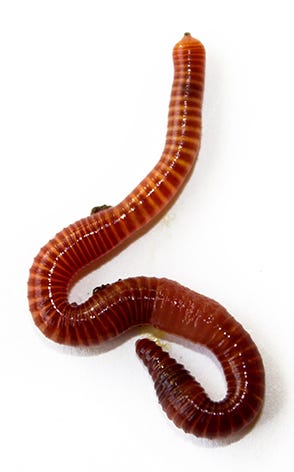The Greatest Guide To Red Wiggler Express
9 Easy Facts About Red Wiggler Express Described
Table of ContentsUnknown Facts About Red Wiggler ExpressA Biased View of Red Wiggler ExpressEverything about Red Wiggler ExpressFacts About Red Wiggler Express UncoveredRed Wiggler Express for Beginners
Some worm farmers really withhold food and water to imitate drought conditions and bump up cocoon production. We don't advise this for the home composter as it has the potential to kill off also many of your finest worms. Since you know everything about the red worm it's time to head out and find an excellent provider and get a pound or more and start your very own worm ranch.We'll speak about how to preserve red wigglers and why they need to be the best worm for most composters. Fun fact: The "fetid" component of the binomial name refers to what some claim is a reeky secretion the red wiggler makes use of to fend off killers. The composition of a red wiggler appears like that of various other typical earthworms; a long-segmented body begins at the sharp head and ends at a slightly-flatted tail.
Red Wiggler Express for Beginners
The digestion tract is simple, beginning at the mouth where the worm begins to consume its food before passing it on to the pharynx. The throat is a muscular area which acts like a pump to draw food into the mouth prior to pumping it out right into the esophagus. The esophagus is narrow and thin-walled and works as the "waiting space" for the gizzard.
Keep in mind: This demand for grinding is why grit is recommended in a worm container. The worm features no indigenous grinding capability so the worm relies upon ingested grit to aid grind its food in the gizzard. The tummy is where the first chemical malfunction of food occurs with the help of a protein-busting enzyme.

Within 42 days, these infant worms will certainly reach sexual maturation as confirmed by the introduction of the clitellum. A fully grown red wiggler can be expected to live between one to three years. The mighty red wiggler might occasionally be made use of as a bait worm for smaller fish or as a protein resource for hens and reptiles.
The 5-Second Trick For Red Wiggler Express
And as stated above, they are the most usual composting worm in the world. Why? Well there's most likely not simply one factor. Rather, a mix of price, hardiness, and convenience in a large range of temperature levels makes it the most appropriate composting worm for the majority of new vermicomposters. Red wigglers and their cocoons can survive in a wide variety of conditions.
This is a typical practice among worm carriers who don't desire to run the risk of having the worms being in a hot or chilly storage facility over the weekend break. Worm cultivators are not saving worms in a circumstance where they are all set to deliver. The worms need to be harvested from their habitat initially, so farmers will often set a Friday or Saturday due date in order to harvest in time for a Monday delivery.
To reduce delivery cost, you may wish to see if there are any close-by "Mommy and Pop" shops via a Google search. If you don't discover what you're seeking, after that I invite you to have a look at worms through the Urban Worm Company! The amount of red wigglers you purchase need to be entirely dependent upon the surface you have offered for vermicomposting.
I call these the "Big 3" elements of worm bin upkeep. As stated previously, red wigglers have a broad temperature tolerance.
The Single Strategy To Use For Red Wiggler Express

For finest outcomes, you wish to aim for concerning 60-70% moisture level. The easiest examination for this is to press a handful as hard as you can. At the ideal wetness levels which is just under 70% that handful must hardly generate one decline of fluid. pH in a worm container is pretty easy to maintain.


The European Nightcrawler, the bigger relative of the red wiggler, is equally as voracious and also makes for an excellent lure worm. However it prefers a little a cooler atmosphere than the red wiggler. The African Nightcrawler is a large composting worm and makes an attractive, granular actors.
The Indian Blue is voracious, but also prefers a warmer environment and it likewise shows a propensity to leave the container. The red wiggler is a sturdy worm and isn't as picky about its environment. I like to call it the Ford Taurus of vermicomposting worms; you will not brag to your hardcore composting buddies that you have them, but they will certainly serve you well.
The Buzz on Red Wiggler Express
Surefire to life 1/2 lb of hand arranged Red Wigglers/Compost with worms (+500 worms) in different stages of life from cocoons to grow worms in their all-natural environment/bedding. Hand sorted worms reduced the disturbance of the worms therefore guaranteeing real-time shipment. Red wiggler worms do not such as resonances or light.